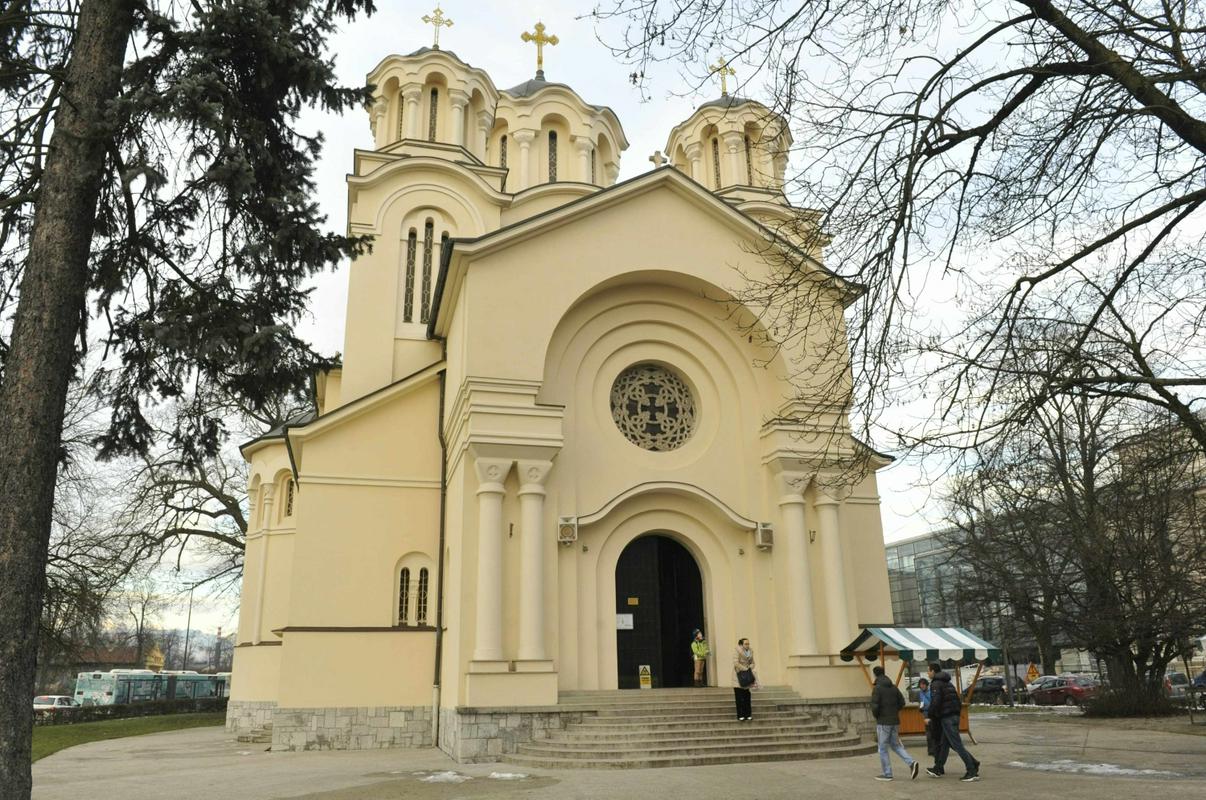
Even though some villages in Slovenia’s Bela Krajina region had Orthodox Churches, Ljubljana’s Serbian population had historically been too small to support a full-time place of worship. That all changed after World War I, when Slovenia was incorporated into the Kingdom of Serbs, Croats, and Slovenes. As the Serbian population grew, the demand for an Orthodox church was increasingly evident. King Alexander personally advocated the construction of the church.
Its construction began in 1932. That year, the foundations of the church were consecrated by Serbia’s Patriarch Varnava. Serbian architect Momir Korunović, who had studied in Prague, Paris, and Rome, decided to base his design on a reinterpretation of medieval Serbian architecture and gave the church a floorplan in the shape of a Greek cross and five domes.
Artists from Serbia were brought in to create the church’s iconostasis, while the icons themselves were the work of Slovenian painter Mirko Šubic. The church also contains one of the largest collections of Orthodox frescoes in Europe, most of them late additions to the church, dating back to the 1980s and ‘90s.
Even though the church was opened to the public in 1936, the advent of World War II and the post-war Communist regime delayed its consecration until 2005, when the Serbian Patriarch Pavle came to Ljubljana and presided over the ceremony.
Seven years later, the church got a modernist neighbor; a Serbian cultural center that has become an important focal point for Ljubljana’s now-sizeable Serbian community.
Remarkable at the time, the church is no longer the sole symbol of Ljubljana’s growing cosmopolitanism: a brand-new mosque has recently been built several blocks away.

































































